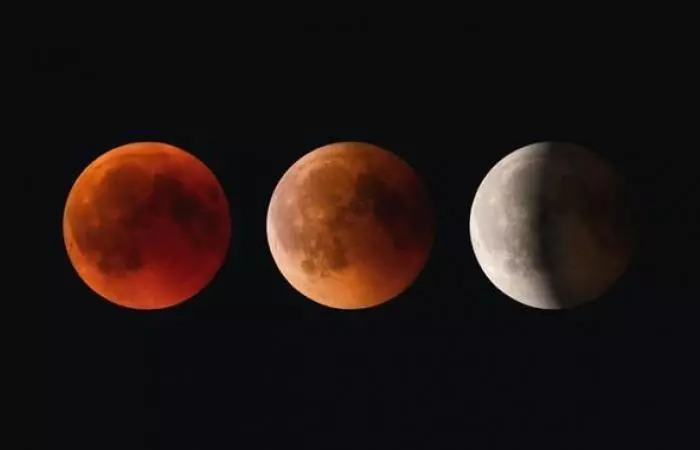
Partial lunar eclipse to occur on Saturday night

Kolkata, Oct 28 (PTI) India along with the rest of Asia, Europe and Africa will be able to witness a partial lunar eclipse on Saturday night.
The celestial phenomenon will continue till the early hours of Sunday, astrophysicist Debi Prasad Duari said.
People in West Bengal will celebrate Laksmi puja on Saturday night.
"There will be a partial lunar eclipse on the night of October 28 which can be witnessed by people in India along with the rest of Asia, Europe and Africa. The eclipse will occur during late night of October 28 and will continue into the early hours of October 29," Duari told PTI.
He said that on October 28, the moon will be partially eclipsed by the shadow of the earth for some time and will give people in India a chance to witness a partial lunar eclipse.
A lunar eclipse is an astronomical event which occurs when the moon moves into the earth's shadow, causing the moon to be darkened. When the moon penetrates partially into the Earth's umbra or shadow, it is known as a partial lunar eclipse. A penumbral lunar eclipse occurs when part or all of the moon passes into the Earth's penumbra or partially shaded outer region of the shadow.
"The change in brightness is not very much noticeable. After this phase, moon will partially enter the actual dark part of the earth's shadow which is termed an umbral lunar eclipse and is considered the actual eclipse by most people," he added.
On October 28 night though the penumbral eclipse will start at around 11:31 pm Indian Standard Time (IST), but the partial Umbral eclipse, which is more noticeable, will start in the early hours of October 29, at around 1:05 am IST, he said.
"It will become maximum at around 1:44 am and will end by 2:23 am. The magnitude of the partial lunar eclipse will be around 0.12 marked by the maximum obscuration of the lunar disc," the astrophysicist said.
On October 14 there was an annular solar eclipse which was witnessed by people in most parts of North and South America when the 'ring of fire' was observed across a large part of the western hemisphere.
"It occurred when it was night over Asia and people here could not see it. The day was a New Moon day and marked the beginning of Navratri, celebrated in major parts of India as the beginning of the Durga Puja Festival," Duari added. PTI SCH RG

